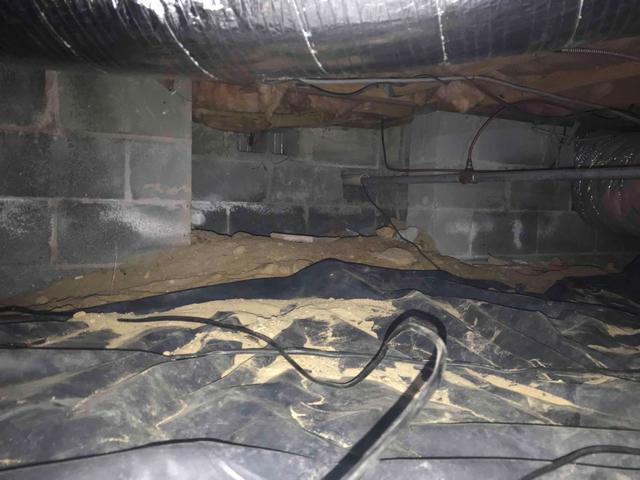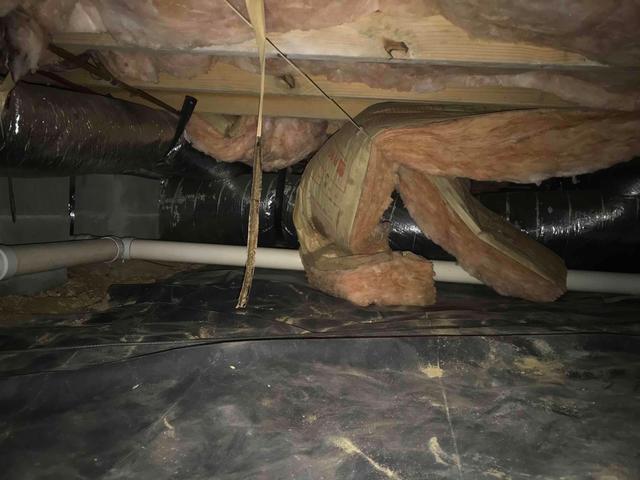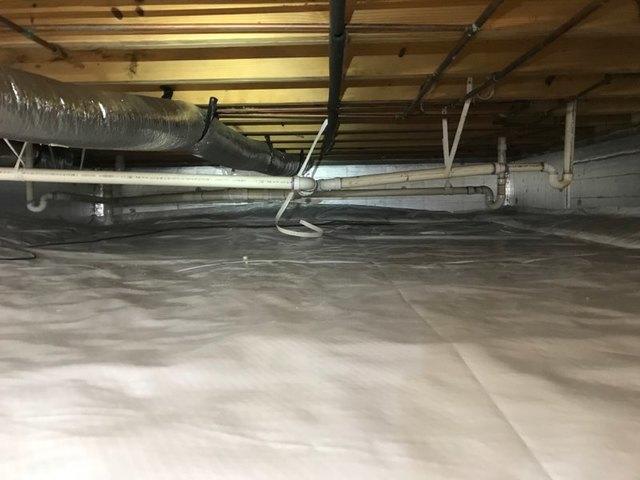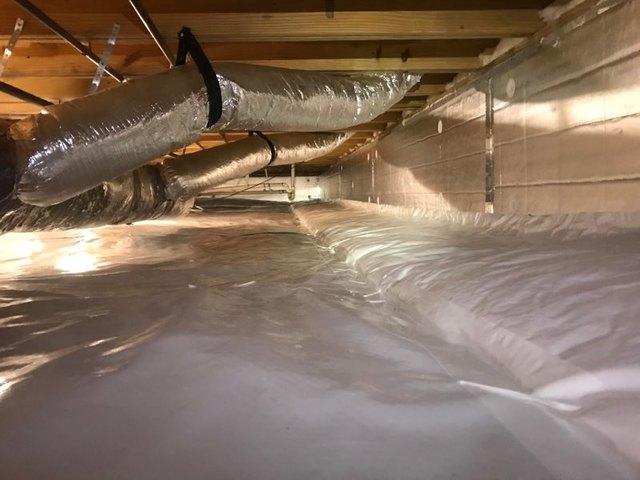
Moisture Infiltration
Moisture seeps through porous block walls, rises from the earth, and floods in through open vents. Clear signs of moisture include efflorescence, the white powdery spots on the walls, damp insulation, mold and mildew growth on floor joists, and pooling water on the liner.

Falling Insulation
Fiberglass insulation acts as a sponge, soaking up moisture in the crawl space. The moisture causes the material to delaminate, as the fibers separate they begin to fall. Added weight from the moisture also causes the batts to fall to the ground and even rusts through the rods holding them in place. The paper on the back of the insulation is "candy" for mold.

Mold and Mildew on Floor Joists
Mildew and mold grow on organic materials when temperatures are warm and the relative humidity rises above 60%. About 50% of the air inside your home comes from the crawl space, this means that your indoor air quality is impacted by the mold, mildew, dirt, dust, and anything else living in your crawl space. Often, inside the home, homeowners notice musty odors, high humidity, and in some cases microbial growth.

A Heavy-duty Vapor Barrier
After being Cleaned out, a heavy-duty vapor barrier called CleanSpace is installed. it is sealed at all seams, mechanically fastened to the walls, and wrapped and sealed around all piers. This seals off the crawl space from the earth's moisture. The liner is 20mil thick and durable for service persons to work in the crawl space without the worry of rips or tears.

Sealed Crawl Space
With the liner installed, all vents, the sill plate, and rim band are all sealed to prevent outside air and moisture from flooding into the crawl space.

Insulating Crawl Space Walls
Foamax, foam board insulation, is installed on the crawl space walls to create a continuous R-10 of insulation. It is sealed at all seams and the top edge is sealed to the foundation wall. A 2-inch viewing strip is left at the top of the wall for termite inspections, per Virginia building code. Finally, a dehumidifier is installed to regulate relative humidity.

